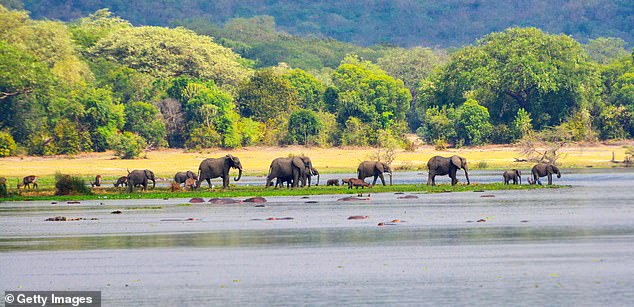Our river guide looks at me seriously. “Did you know that hippos are poor swimmers, but elephants swim very well?” Clinton asks.
We are on a small boat in the Murchison Falls Game Park on the Victoria Nile River in northwestern Uganda. There are hippo eyes everywhere, their wrinkled eyebrows poking out of the water.
“They appear to be swimming but their feet are on the muddy ground,” he says.
At that moment, a gasp can be heard among my fellow travelers. In the middle of the river, a family of elephants is crossing. They are submerged up to their bellies, their legs resting on the shallow bottom. Two calves have their trunks wrapped tightly around their mothers’ tails for safety.
The big male wiggles his ears as the boat approaches. At the end of the line are the teenagers. They’re having a great time, tumbling around like giant Labradors. They suck up water and then spray it everywhere. One of them crouches down and does a flip. Another dives like a submarine and uses his trunk as a snorkel. “See how they swim?” Clinton says.
Alice Morrison goes on safari to Murchison Falls Park in Uganda (above) and says that “a budget safari costs around £200 a day, 30 per cent less than in Kenya.” During her trip she sees elephants, hippos, lions and more animals.
Uganda is a small, landlocked country in East Africa. It shares borders with Kenya and Tanzania and is teeming with wildlife, but the price of its safaris is comparatively cheaper. A budget safari costs around £200 a day, 30 per cent less than in Kenya.
And the advantage is that you don’t have to compete with crowds. You won’t have to share your lion with 20 other vehicles competing for the best camera positions. If you have the budget, there’s also the option of visiting the gorillas in Bwindi Impenetrable Forest – a permit in Uganda costs half as much as one in Rwanda.
Another plus point is the accommodation, there are many authentic options, built with techniques in harmony with the environment.
English is the official language and the country has enjoyed relative stability following civil wars that erupted in the 1970s and 1980s. The current president, Yoweri Museveni, has been in power for nearly 40 years and has been under pressure for human rights violations. He helped oust Idi Amin and has been in office since 1986, though he faces growing calls to step down.
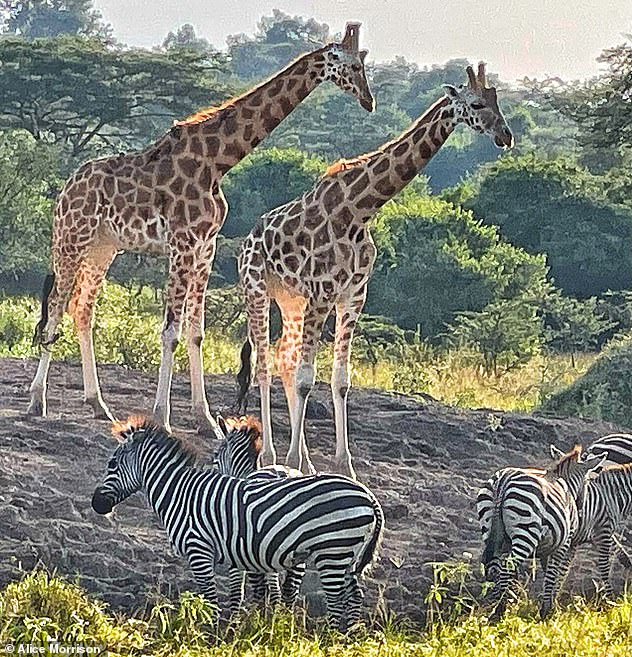
Alice sees “a small herd of giraffes” at Murchison Falls with the “advantage that you’re not competing with crowds, jostling for the best camera positions.”
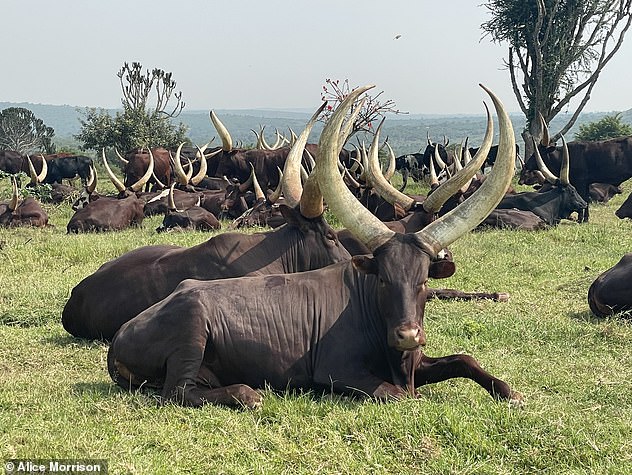
While in Uganda’s largest game park, Alice spies a “surly herd of water buffalo, the most dangerous animal in the forest.”
Murchison Falls is the largest game park in the country. Ibra, my driver, and I set off at dawn for a land-based adventure.
“Look,” Ibra says. Ahead is a small herd of giraffes, walking with that peculiar, swaying grace. One stretches its neck and nibbles a delicacy from a thorny tree. We are so close that I can see the individual hairs on the big male’s chin.
“Giraffes have the same number of neck vertebrae as humans: seven. But the problem is that theirs can be up to 25 centimetres long,” explains Ibra. One for the pub quiz. As we drive on, four different types of antelope play tag with our jeep. A group of water buffalo, the most dangerous animal in the jungle, glares at us from a waterhole.
We have the park to ourselves, but suddenly we see a small group of vans. A lion moves slowly through the grass, moving in and out of sight.
It’s an adrenaline rush.
Later, I spot two pairs of furry ears in the bushes, and suddenly a hyena emerges from its hiding place and gallops in front of us for several hundred metres. “I’ve never seen one do that before,” Ibra admits.
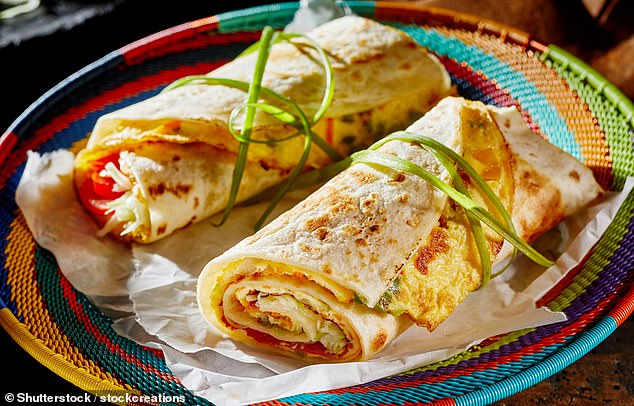
“My favourite food is Rolex (pictured). It’s a tortilla wrapped in chapatti and freshly prepared in front of you on an iron griddle at small street stalls,” says Alice (file image)
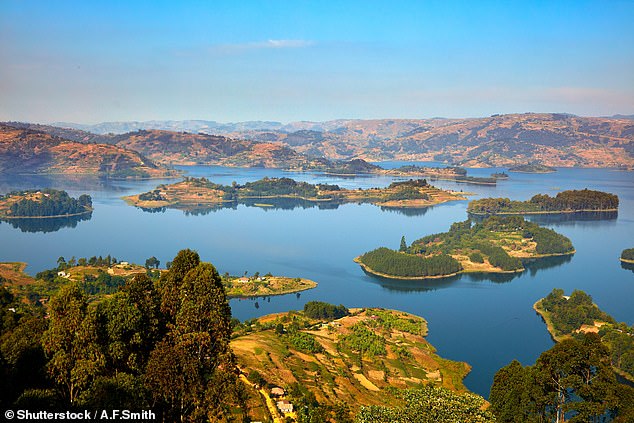
“I want to relax during my last few days, so I’m heading to Lake Bunyonyi (pictured above), known for its tranquility and birdwatching,” Alice says.
Uganda is not just a safari country. It has good restaurants and a lively nightlife in the cities. Music and dancing are an important part of life and Ugandans dance the perreo at any opportunity.
Women wear wraparound skirts and brightly coloured headscarves. They dominate the open-air markets, sitting in front of piles of mangoes, pineapples and large avocados.
Don’t try Ugandan food if you’re on a ketogenic or protein-based diet. It’s carb-heavy and the portions are huge.
My favourite dish is Rolex. It is a tortilla wrapped in chapatti and prepared freshly in front of you on an iron griddle at small street stalls.
After the excitement of seeing the Big Five, I want to relax for my last few days, so I head to Lake Bunyonyi, known for its tranquility and birdwatching. I am picked up by boat and we cruise across the water to my lodge on one of the 29 islands. Blue kingfishers and royal crested cranes fly overhead.
I am staying in a thatched hut with no door; the shower is outside and is heated by the sun.
My last day is spent watching a family of kingfishers swimming in shallow waters while royal crested cranes fly by, and remembering those mischievous teenage elephants snorkelling in the Nile.


